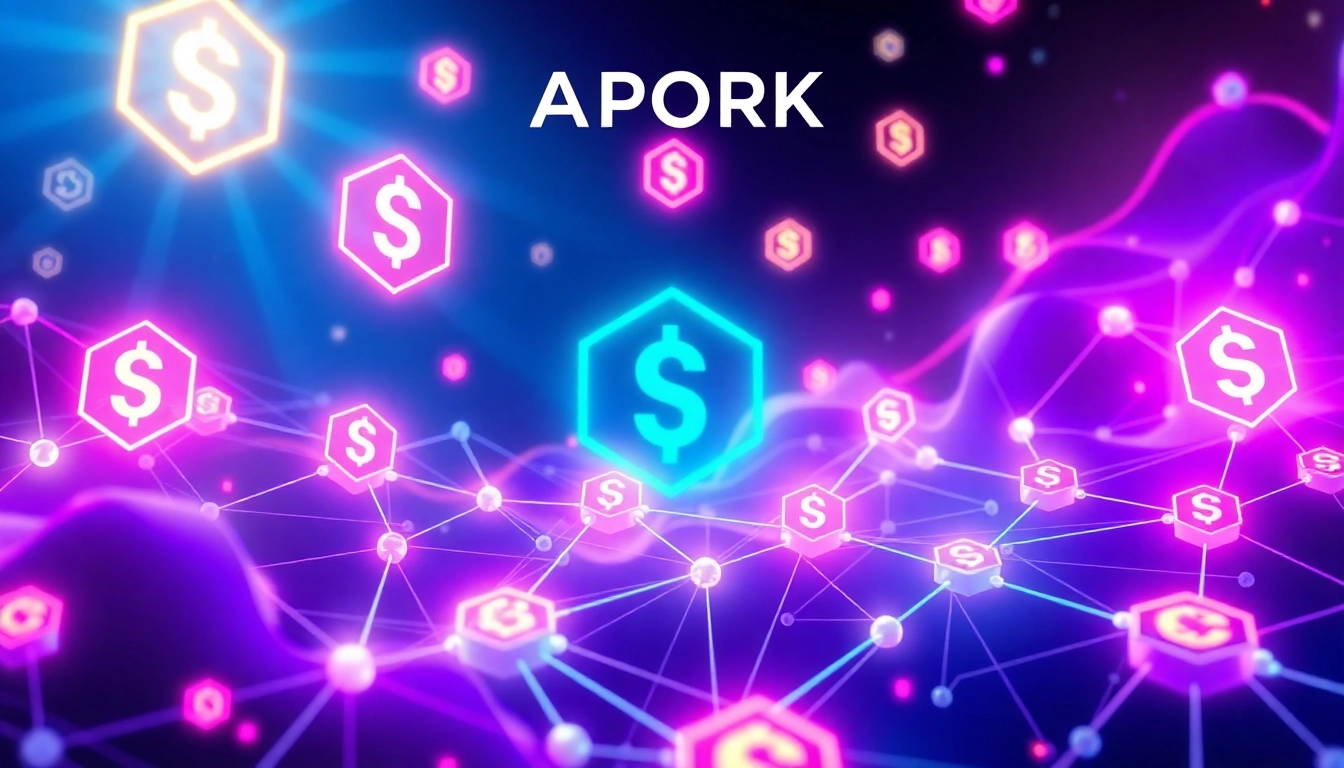Introduction to $APORK Token Supply and Its Significance
In the rapidly evolving landscape of meme coins and blockchain gaming, understanding the nuances of token economics is crucial for both investors and community members. One pivotal aspect is the $APORK Token Supply. This metric not only influences the token’s market behavior but also underpins its potential for growth, utility, and sustainability. As Angry Pepe Fork positions itself as a community-driven meme coin supercharged with GambleFi features, appreciating how its token supply functions becomes vital in making informed decisions and in grasping the long-term vision of the project.
What Is $APORK Token Supply?
The $APORK token supply refers to the total number of tokens that exist within the ecosystem at any given time. It encompasses the total issued tokens, including those allocated for presale, staking rewards, liquidity pools, and community incentives. Unlike traditional currencies, tokens serve multiple functions—ranging from enabling transactions to incentivizing community engagement and fostering utility through gamified platforms like GambleFi. The sustainable management of this supply is central to maintaining token value and utility, especially in volatile markets typical of meme coins and DeFi projects.
In the case of Angry Pepe Fork, the token supply is designed to align with its deflationary mechanisms and strategic expansion plans. The current total supply stands at 1,900,000,000 $APORK, with a practical circulating supply crafted through early presale distributions and ongoing burn strategies. Effective supply management ensures that early buyers and community supporters can benefit from growth and price appreciation, making the project attractive for long-term investors.
Why Token Supply Matters in Meme Coins
In meme coin ecosystems, token supply plays a crucial role in determining market dynamics and community perception. A large supply, such as the millions or billions of tokens, is common, as it enables low per-unit prices, appealing to retail investors and casual traders. However, without proper mechanisms, such immense supplies can lead to inflationary pressures or devaluation.
Strategic control over token supply allows projects to implement deflationary measures like token burns, which decrease total supply over time, thereby fostering scarcity and increasing demand. For Angry Pepe Fork, the intelligent management of supply—through mechanisms like burning a portion of tokens after each GambleFi game payout—aims to sustain price growth and prevent dilution. This approach fosters a perception of scarcity and value retention, which are vital for maintaining investor confidence and promoting utility.
Overview of the Current $APORK Token Cap
The current $APORK token cap is set at 1.9 billion tokens, a carefully calibrated figure based on market goals, community incentives, and deflationary strategies. This cap ensures that the ecosystem can support extensive liquidity, diverse utility features, and robust community rewards without risking unchecked inflation.
It’s important to note that while some projects have vastly higher token supplies, such as PepeFork with approximately 420 trillion, Angry Pepe Fork’s more controlled supply aligns with its strategic focus on utility and value appreciation. By setting a capped supply, the project aims to balance accessibility for retail holders with long-term scarcity. Maintaining transparency around supply figures fosters trust and encourages community-led growth—all essential in a community-first project like Angry Pepe Fork.
Breakdown of $APORK Tokenomics and Distribution
Token Allocation and Major Holders
The distribution of tokens significantly influences project stability and growth prospects. Angry Pepe Fork allocates its $APORK tokens as follows: 25% for marketing, 10% for community rewards, 15% for the project treasury (locked), 20% for presale, 15% for staking rewards, 10% for liquidity, and 5% for exchanges & listings. This diversified allocation encourages active community participation while securing foundational liquidity and strategic partnerships.
Presale and Staking Rewards Distribution
The presale phase captures a significant portion of tokens, fostering early community ownership and enthusiasm. Stakeholders who participate during presale can stake their tokens on the Ethereum network to earn attractive APY, with rates decreasing as more users engage—ensuring early supporters are rewarded for their risk and commitment. Locked staking contributes to price stability, while also incentivizing long-term holding.
Impacts of Token Supply on Price Appreciation
Controlled token supply and strategic burning of tokens after payout events—such as GambleFi games—are designed to create a deflationary environment. Such mechanisms decrease the available supply over time, raising the relative scarcity, which typically drives long-term price appreciation. The supply cap combined with scarcity tactics appeals to both traders and hodlers aiming for substantial gains, with $APORK targeting 10,000%+ APY during presale and strong growth post-launch.
Impact of Token Supply on Market Dynamics and Utility
How Supply Affects Liquidity and Trading Volume
Token supply directly impacts liquidity and trading activity. Sufficient liquidity pools—supported by allocated reserves—ensure smooth trading and minimize price slippage. A well-managed supply guarantees that there are enough tokens to sustain trading volume, attract exchange listings, and support community initiatives like staking and GambleFi mini-games.
Correlating Token Supply with Utility and Gamification
In a project like Angry Pepe Fork, token supply underpins utility features such as staking rewards and GambleFi gaming. Limited supply and intentional burns foster demand for participating in these activities, encouraging active engagement. As players wager $APORK on on-chain mini-games, the deflationary mechanism ensures that each transaction contributes to a rising scarcity, thus potentially enhancing long-term value.
Deflationary Mechanisms and Their Effect on $APORK Supply
Deflationary strategies, including token burns after payout events and buy-back systems, actively reduce total supply over time. For example, a portion of $APORK tokens used for gamble payouts are burned, creating a continuous cycle of scarcity. This not only promotes price appreciation but also aligns community incentives with project sustainability and growth.
Comparing $APORK Token Supply with Competitors
Key Differences with PepeFork and Other Memecoins
Compared to PepeFork, which has a circulating supply exceeding 400 trillion tokens, $APORK’s capped supply of 1.9 billion is intentionally designed for better utility and scarcity. While high supplies lend themselves to low prices at a glance, the strategic burning and deflationary measures implemented by Angry Pepe Fork aim for price stability and upward momentum.
Market Cap and Circulating Supply Insights
Strong market cap figures, such as $16.92M for PepeFork, are often correlated with how supply is managed. Less aggressive inflationary scenarios and comprehensive known caps, like $APORK’s, foster trust. Transparency in circulating and total supplies, along with regular updates, helps attract investors seeking long-term value rather than short-term gains.
How Supply Strategies Influence Adoption and Upgrades
Supply strategy influences network upgrades, scalability, and partnership opportunities. Projects with predictable, capped supplies are more attractive for integrations and broader adoption. Angry Pepe Fork’s limited supply paired with upcoming multi-chain bridging will help solidify its position as a utility-driven meme coin with long-term growth potential.
Strategic Outlook and Future Supply Management
Upcoming Changes and Bridging Plans
Future updates include multi-chain bridging to expand $APORK’s reach across popular blockchain networks, which will increase utility and liquidity. These plans may involve tokenized representations on different blockchains, with supply adjustments to support cross-chain liquidity while maintaining scarcity goals.
Long-term Supply Scarcity and Value Preservation
The project emphasizes transparency regarding token supply and burning schedules, prioritizing long-term value preservation. As the community adopts these measures, scarcity will continue to fuel price growth, rewarding early supporters and incentivizing new investors to participate in the ecosystem.
Community Engagement and Supply Transparency
Empowering users to shape the future supply strategy is fundamental for community-driven projects. Regular disclosures, open governance around token burns, and participation incentives ensure that the supply remains aligned with both market demands and the community’s vision—creating a sustainable ecosystem with shared growth.



